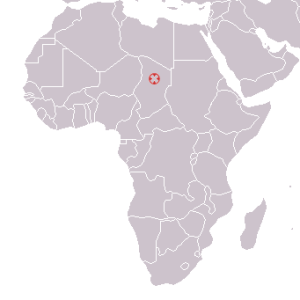Part III: Pliocene Epoch
12. Australopithecus bahrelghazali
Australopithecus bahrelghazali (<3.4 mya)
(“southern ape” / Bahr el Ghazal [Arabic: river of gazelles], Chad)
Note: Au. bahrelghazali is out of order here, in terms of date, because of its affinity to Au. afarensis.

SITES
Bahr el Ghazal, Chad
PEOPLE
Michel Brunet
INTRODUCTION
While it is possible that Au. bahrelghazali was a distinct species, the majority view is that it was a geographic variant of Au. afarensis. If that is the case, one can see how far the species ranged, from the horn of Africa, south to Tanzania, and west to Chad (see Figure 12.1). The Chad population was close in time to the material from the Afar Depression in Ethiopia, e.g. Lucy at 3.2 mya and Selam at 3.3 mya, versus the older material from Laetoli, Tanzania, that is dated to as old as 4.2 mya. Remember also that some researchers believe that the Ethiopian and Tanzanian populations were too far removed in geographic space and time to be considered the same species and/or to be using the holotype from Laetoli for the other populations. The partial mandible that was discovered by Michel Brunet at Bahr el Ghazal differed from Au. afarensis only in having been less prognathic. A premolar was also found at the site. The ancient environment has been compared with that of Hadar (Lucy’s site), i.e. a mosaic environment consisting of wood- and grasslands.

